Another selection of bright and beautiful birds from my recent trip to Kenya. As I have mentioned before, Kenya is one of the best birding destinations in the world with 1100 bird species recorded within its borders!
Every time I visit I am very pleased to meet new species I have never seen before and also to be reacquainted with species that feel like old friends.
Here I have 8 lovely species to introduce to you from four closely related families starting with these gorgeous Little bee-eaters.
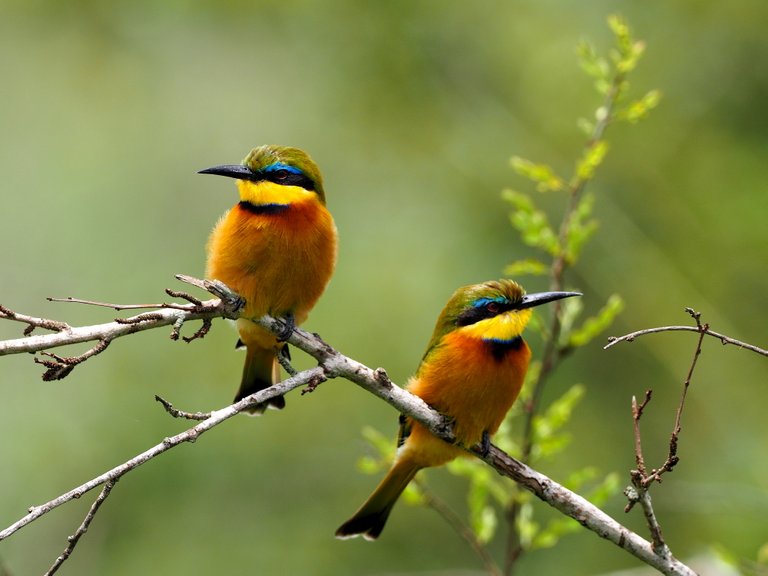
(Little bee-eaters)
We met these two in Nairobi National Park. It has been a photographic goal of mine for a while to get my first decent bee-eater shots and I was pretty chuffed to finally capture the images.
Bee-eaters, as the name suggests, are specialist at catching and eating bees although wasps, hornets and other flying insects are also caught. They will catch their prey on the wing with amazing agility before returning to their perch where they will remove the insect's sting by rapidly hitting it against a piece of wood before eating it.
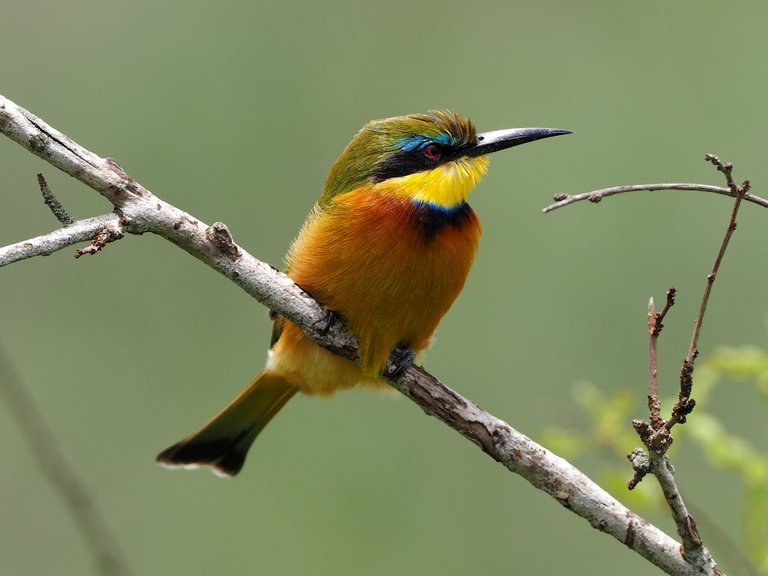
(Little bee-eater)
These are the smallest species of African bee-eater. Little Bee-eaters are unusual amongst the family because they are solitary nesters whereas most other bee-eater species have big communal nesting sites. They do however like to sit in close proximity to other members of the species and sometimes a dozen or so will roost on the same branch all in physical contact with one another, something I would love to see and photograph one day.
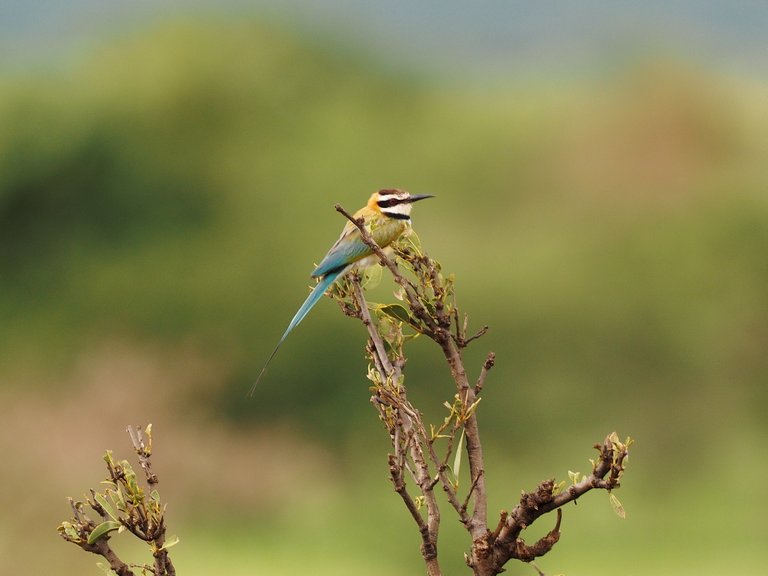
(White-throated bee-eater)
I only got a fleeting glimpse of this bird, the White-throated bee-eater, down in the dry country of the Rift Valley near Olorgesailie. They nest in big groups and have more complex social structure than any other birds. They are four tiers to their social system. First it the individual pair, a male and female who produce eggs together. Then the family unit which is the pair and the young male offspring who help their parents to raise the chicks. After that there is the clan where several family units join together to stake out a feeding territory which they vigorously defend from other clans. Then finaly there is the colony as a whole which can contain several hundred individuals. They are very social birds and will spend about an hour in the morning sunning and preening themselves and engaging in social behaviour and do the same in the evening minus the sunning.
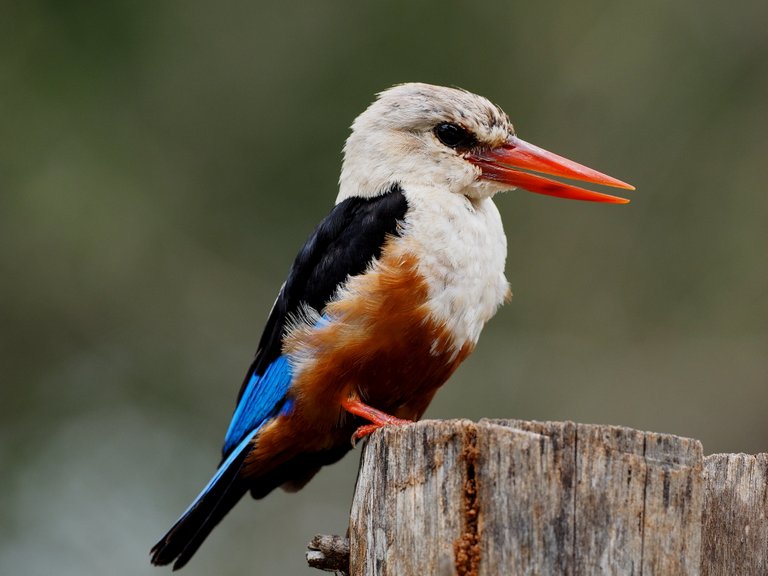
(Grey-headed kingfisher)
The grey-headed kingfisher. There were a few of these colourful birds around the lodges in Tsavo East. Unlike most other kingfishers these birds are not aquatic. Instead they live in dry woodland and scrub, hunting lizards and insects.
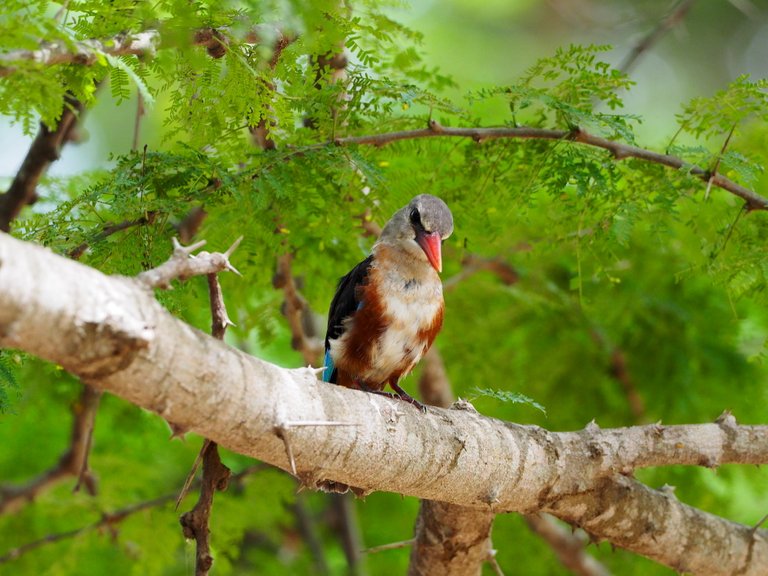
(Grey-headed kingfisher)
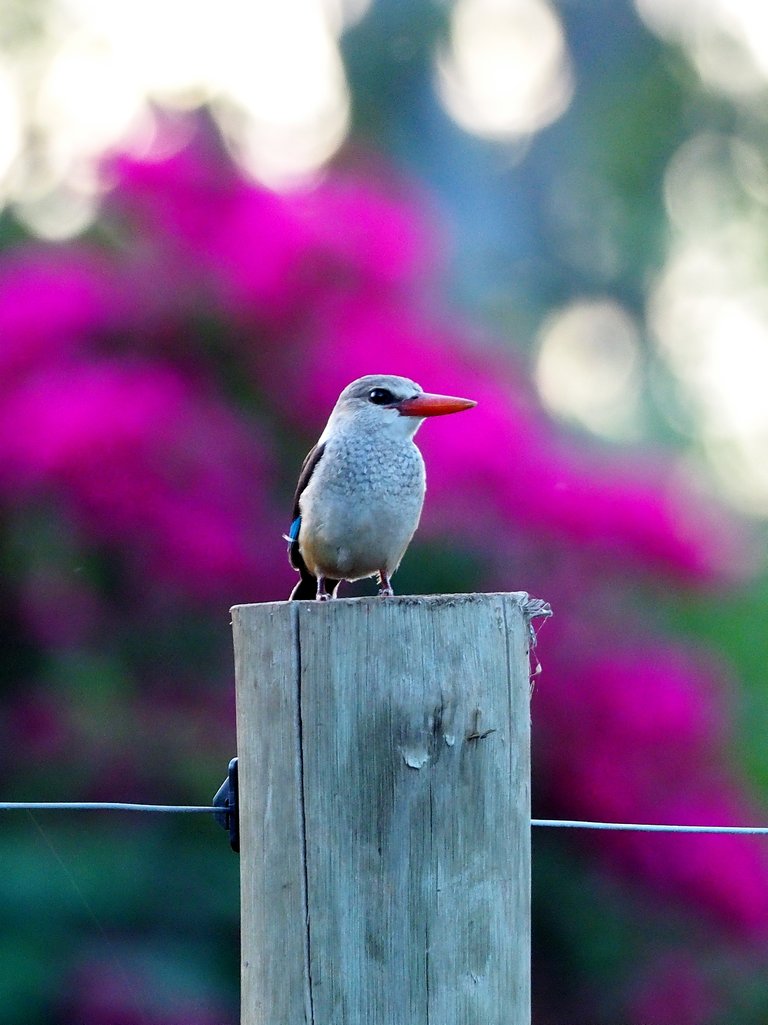
(Grey-headed kingfisher)
This species is widely distributed across Africa and into the Arabian Peninsula. These birds are also parasitized, along with other closely related species, by the greater honeyguide - they lay their eggs in the nests of other birds just as a cuckoo does.

(Pied kingfisher)
Whenever I’m around lakes, big ponds and rivers in Kenya I nearly always see pied kingfishers. These large and powerful kingfishers are true aquatic birds that preform the classic aerial manoeuvres of their family. They hover gracefully in the air high above the water scanning for their target and when they find one they and swoop and dive into the water like a little missile before quickly breaking back out through the surface and into the air again. When they do, it seems more often than not they return to the air with a glimmering silver fish in their beak which they often eat on the wing. This allows them to hunt over large bodies of water with most other kingfishers cannot do. Pied kingfishers are reckoned to be the third most common kingfisher in the world, found in a large belt through sub-Saharan Africa to the Middle East and on into China.
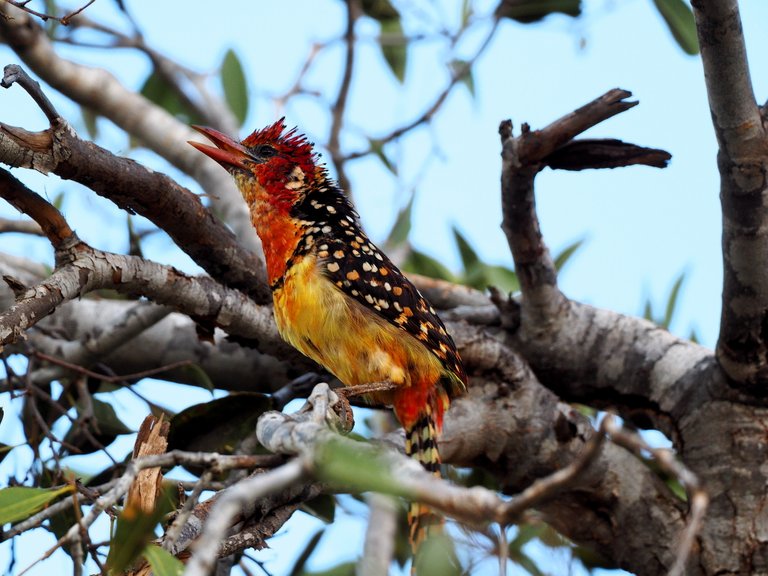
(Red-and-yellow barbet)
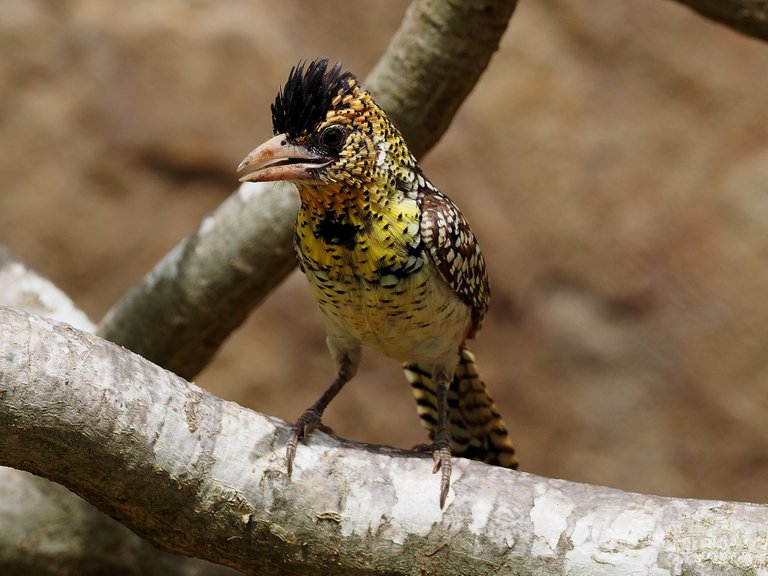
(d’Arnaud’s barbet)
On this trip we saw two species of barbets the red-and-yellow barbet and d’Arnaud’s barbet (a new one for me!). Barbets are real generalist omnivores eating a wide range of foods from seeds and fruits to insects. They are lovely bright coloured and distinctive birds and I always feel like they are intelligent and full of character.
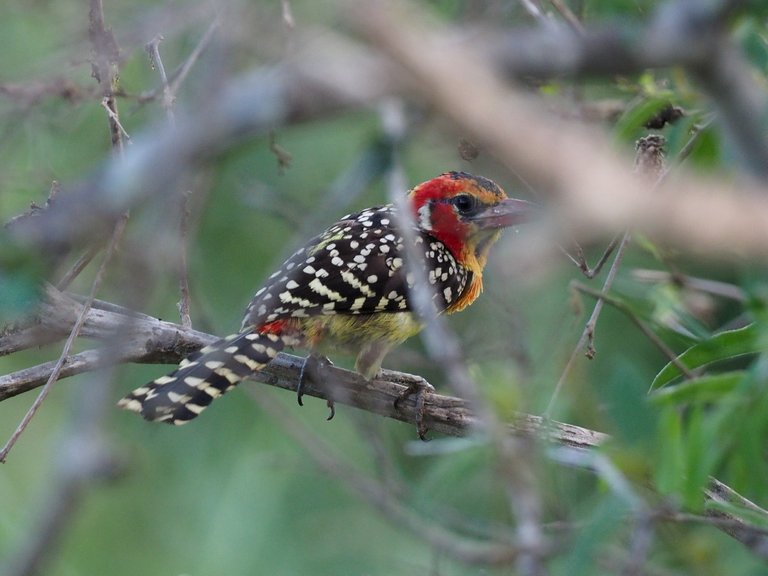
(Red-and-yellow barbet)
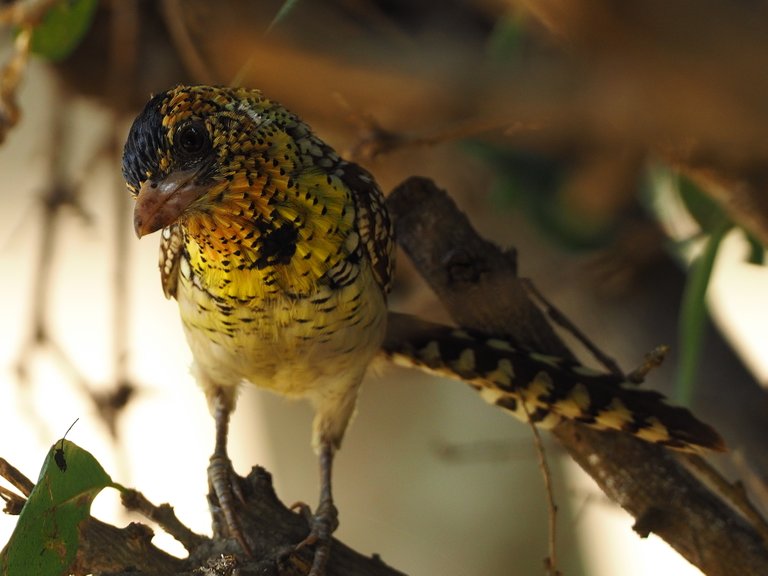
(d’Arnaud’s barbet)
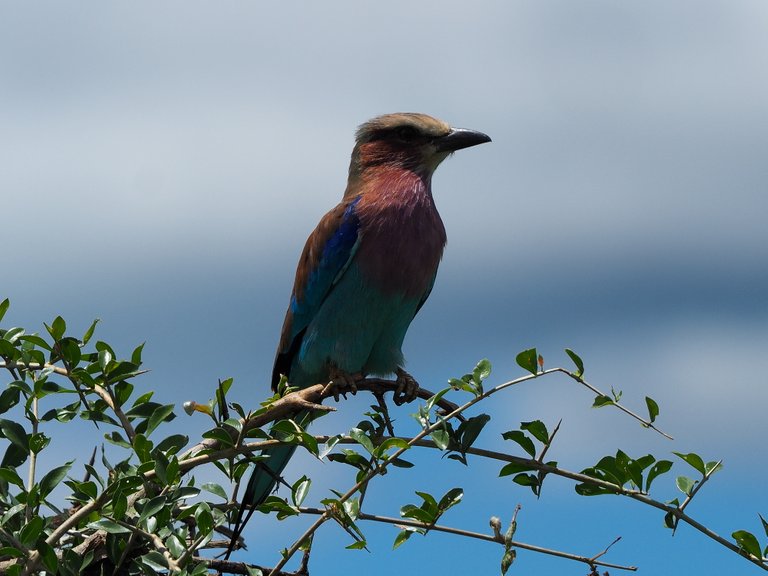
(Lilac-breasted roller)
Another common sight for East African birdwatchers is this character - the Lilac-breasted roller. Seeing these birds lets me know I’m on holiday and is one of the birds of my childhood. They are large and distinctly coloured and will often perch on high, prominent position making them very noticeable. They use these high perches to spot their prey such as lizards, scorpions, little birds and rodents. They tend to nest in old woodpecker and kingfisher holes and have a reputation for vigorously defending their nest against all comers including large raptors.
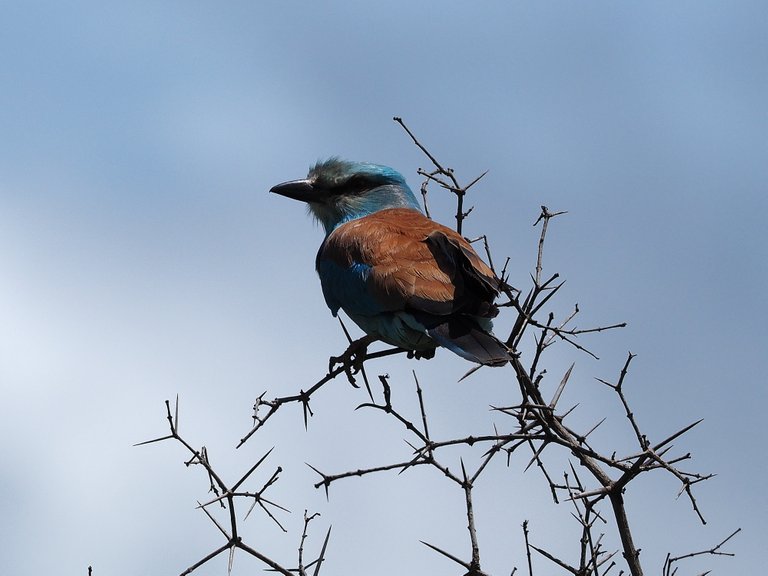
(European roller)
We also got a reasonable sighting of this European roller. As the name implies it is one of the only rollers that can be seen in Europe, where they migrate in the summer to breed. They are long distance migrants spending the winter months in southern Africa. These ones in Kenya are usually just passing through I believe. On a rather unusual note: back in 1990 an Indian aircraft reported having a bird strike with one of these birds at an altitude of 2,424 meters above the Arabian sea, an impressive height for a bird this size. By the way the highest recorded bird strike was caused by a Rüppell’s vulture over the Ivory Coast which struck an aircraft at a colossal 11,300 metres above sea level!
Awesome collection of great image!! Hope work Tim
Thank you Sergio! I'm happy you like them. ;-)
Peace, Abundance, and Liberty Network (PALnet) Discord Channel. It's a completely public and open space to all members of the Steemit community who voluntarily choose to be there.Congratulations! This post has been upvoted from the communal account, @minnowsupport, by timspawls from the Minnow Support Project. It's a witness project run by aggroed, ausbitbank, teamsteem, theprophet0, someguy123, neoxian, followbtcnews, and netuoso. The goal is to help Steemit grow by supporting Minnows. Please find us at the
If you would like to delegate to the Minnow Support Project you can do so by clicking on the following links: 50SP, 100SP, 250SP, 500SP, 1000SP, 5000SP.
Be sure to leave at least 50SP undelegated on your account.
amazing pictures of the birds
Thank you @makesushi! :-)
fantastico ,ottimo lavoro
Cheers @dubbio!
Hi timspawls,
LEARN MORE: Join Curie on Discord chat and check the pinned notes (pushpin icon, upper right) for Curie Whitepaper, FAQ and most recent guidelines.
Thank you @curie! :-)